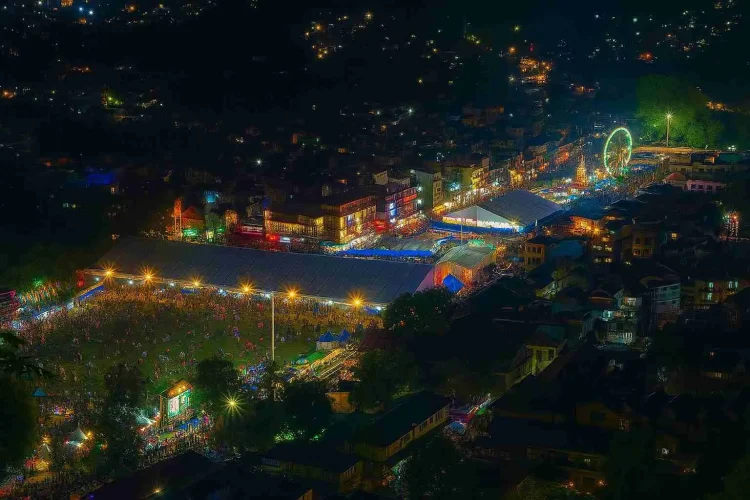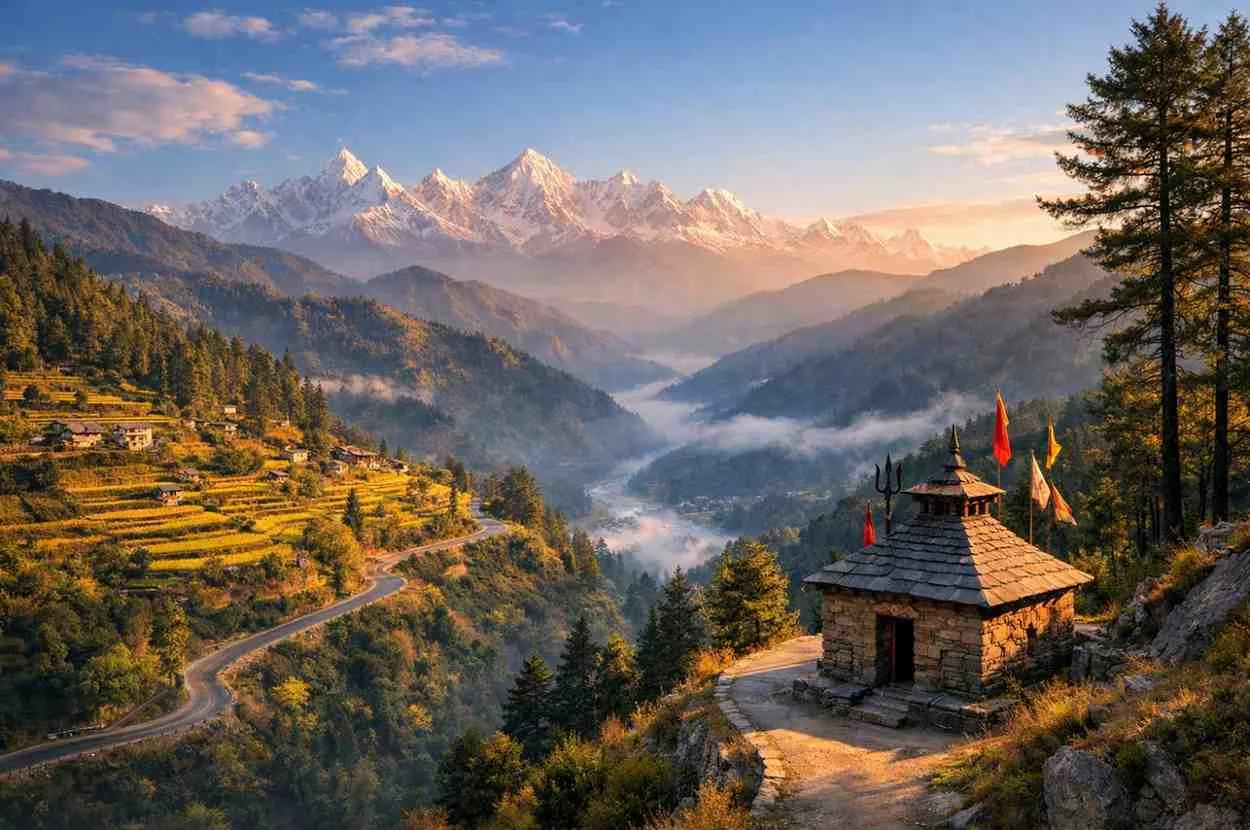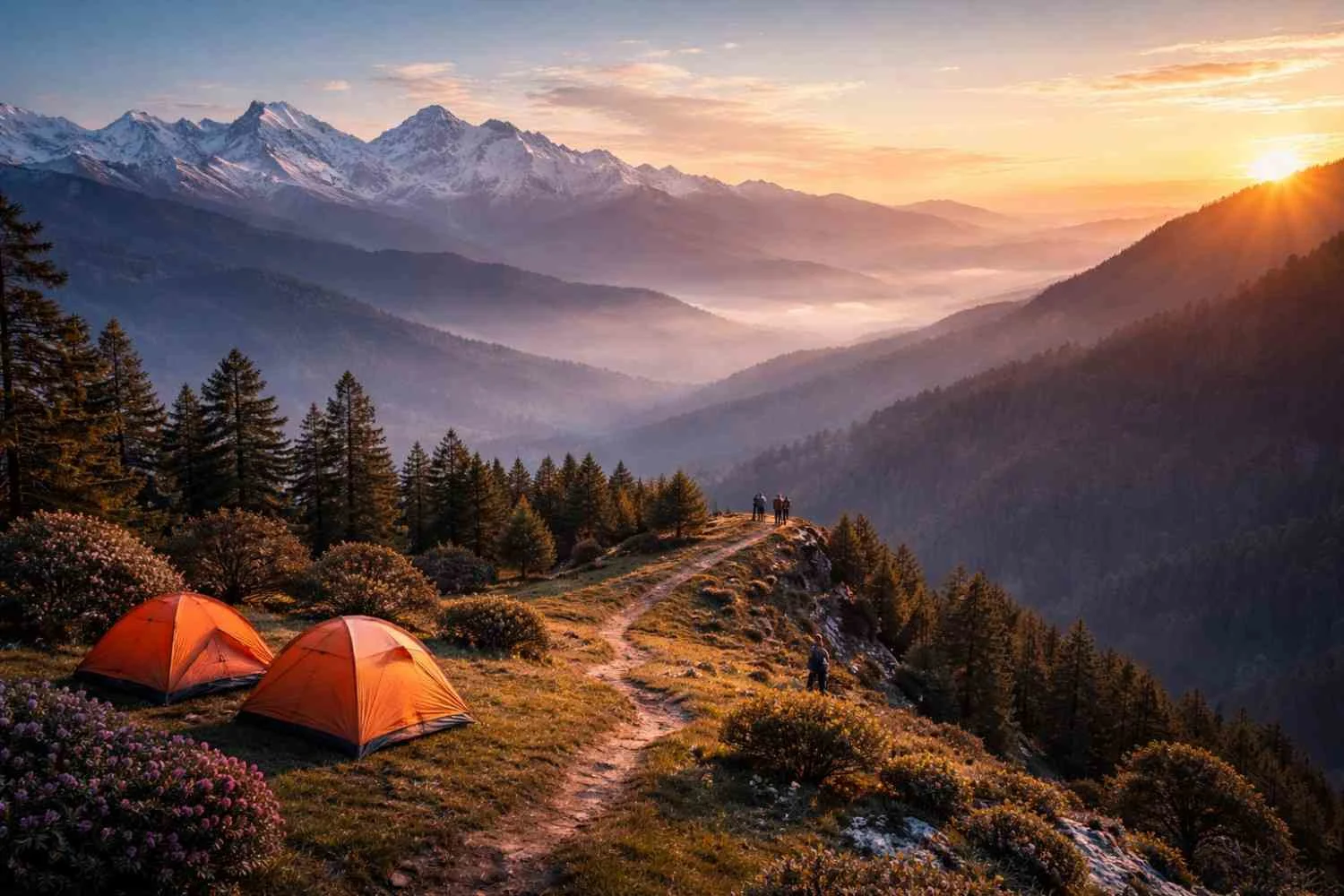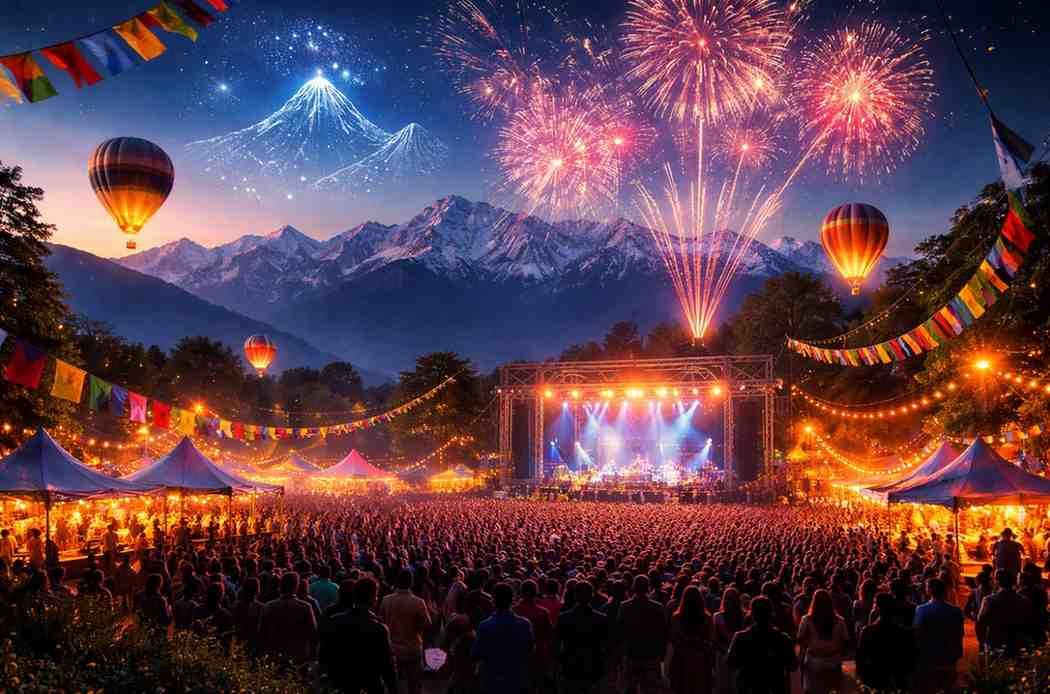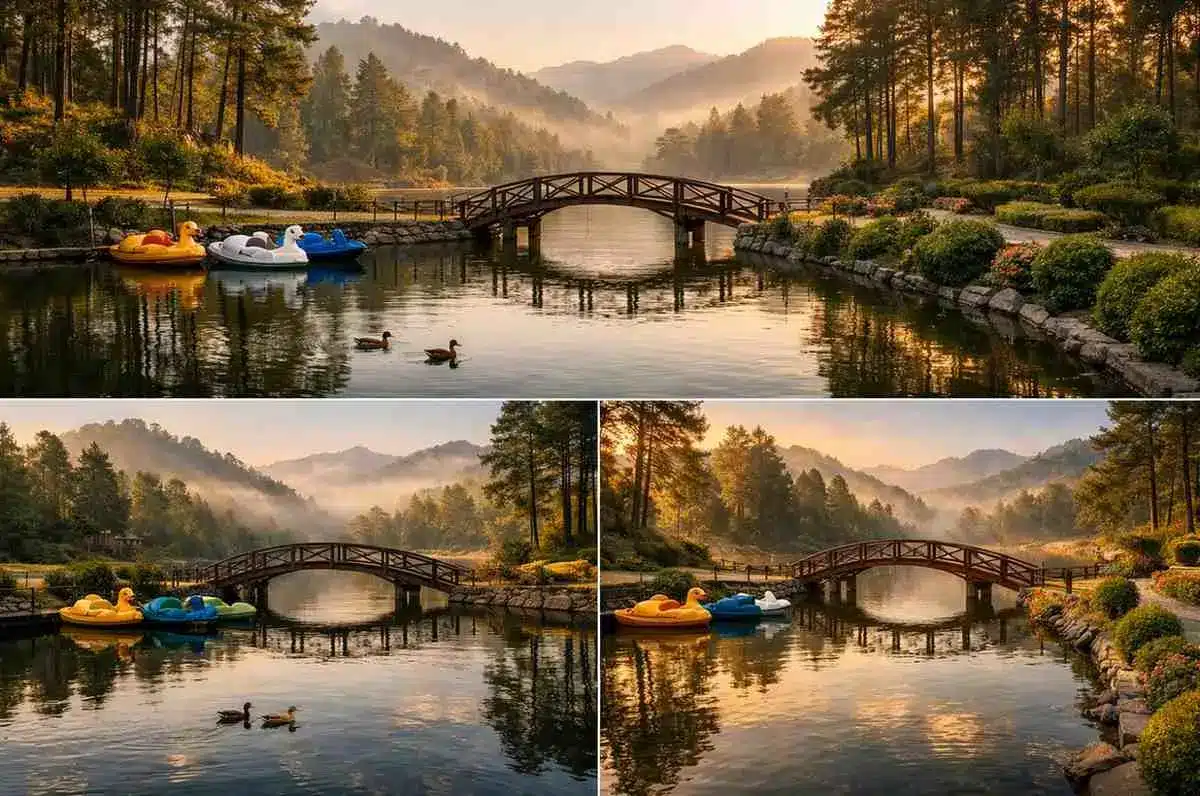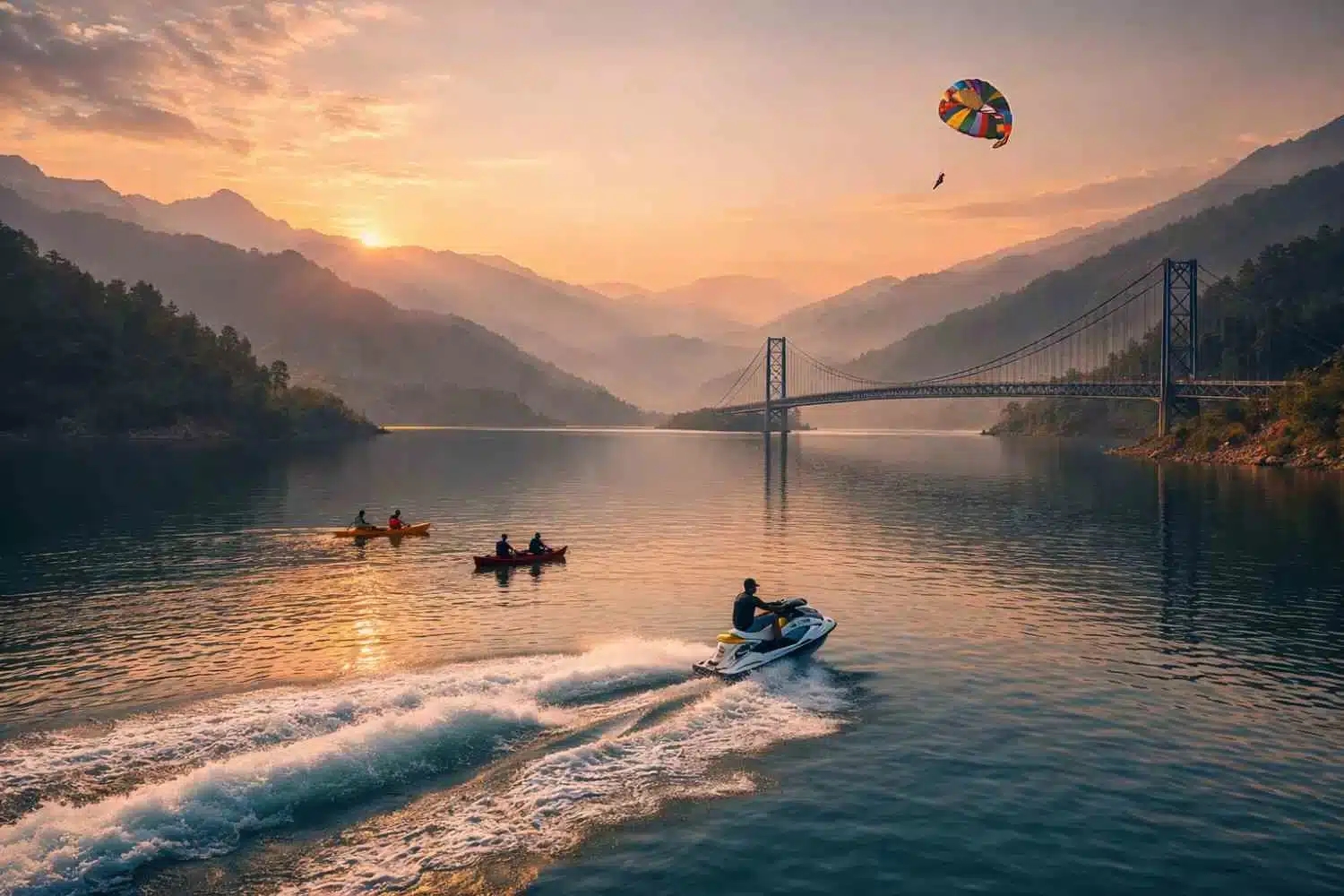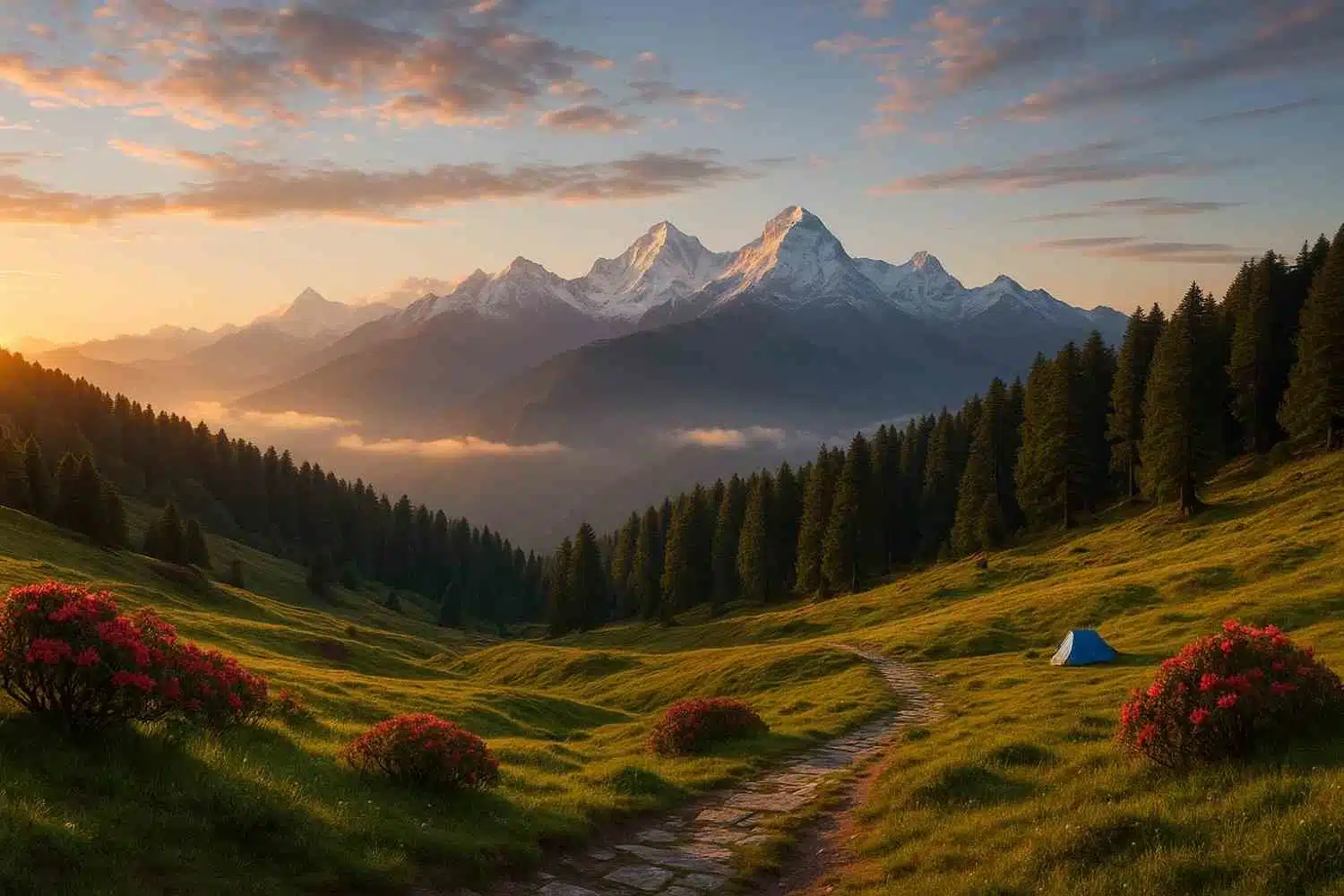Himachal Pradesh is more than mountains and monasteries. It’s a living, breathing repository of tradition. And at the heart of it all is the Minjar Mela festival that brings the town of Chamba to life every year. This is one of those events where culture isn’t displayed; it’s lived.
Celebrated with great fervor, Minjar Mela Chamba isn’t just another event on the calendar. It’s about harvest. It’s about people coming together. It’s about rituals that have survived wars, empires, and modern tourism. Every local knows its rhythm. Every visitor feels its pull.
At its core, Minjar Mela represents unity, prosperity, and tradition. The kind that doesn’t get diluted with time. If you’ve ever wanted to see an entire town celebrate both its gods and its crops, this is where you start.
Minjar Mela Historical Background
To understand Minjar Mela, you need to go back over a thousand years. The story begins in the 9th century, when King Sahil Varman defeated the rulers of Trigarta. In celebration, he started a festival symbolized by the golden silk tassel, known locally as the minjar.
Over time, this tassel came to represent more than just victory. It became a symbol of agricultural prosperity. And with it, Minjar Mela Chamba took on layers of meaning: royal pride, spiritual devotion, and community celebration.
What makes this history powerful isn’t just the story of a king-it’s the blend of myth and local tradition. This festival connects temples with royal palaces, farmers with deities, and the past with the present. It’s a cultural mosaic that’s survived because people kept believing in its value.
When and Where the Minjar Mela Is Celebrated
Timing matters. Minjar Mela kicks off on the second Sunday of Shravan month-usually in late July or early August. This aligns with the maize harvest, adding seasonal importance to the celebration.
The setting is Chamba, a picturesque town tucked into the western Himalayas. If you haven’t been, picture misty hills, ancient temples, and cobbled streets all decked out for a celebration that pulses through every alley.
Minjar Mela in Himachal Pradesh doesn’t happen in a closed venue. It spills into markets, temple courtyards, and riverbanks. The entire town is the stage. Everyone plays a role. If you’re in Chamba during this time, you won’t be a spectator-you’ll be part of the festival.
Also Read: Best Yoga Retreats in Himachal Pradesh
Minjar Mela Cultural Significance
So, what’s the big deal with a tassel and some corn? Turns out-everything. The minjar, a red and yellow silk thread tied to a maize cob, is the beating heart of the celebration. It symbolizes a good harvest, peace, and divine blessings.
In Minjar Mela, Himachal Pradesh, this tassel isn’t just a decoration. People offer it to the Ravi River, hoping it carries their wishes to the gods. This act of surrender, paired with community prayer, reinforces faith in both the divine and the soil.
But it’s not all solemn. The festival is filled with music, dance, and cheer. It’s a beautiful collision of Hindu rituals, agricultural cycles, and folklore. For locals, it’s a reminder of identity. For visitors, it’s a rare window into Himachali spirituality and agrarian life.
Minjar Mela Main Attractions and Rituals
The highlight? A royal procession led by Chamba’s royal family. They walk through the streets alongside idols of local deities, accompanied by flag bearers, musicians, and townspeople dressed in traditional attire.
Then comes the Minjar Mela fair itself: packed with folk artists, performances, and people lining up to offer minjar tassels into the Ravi River. The atmosphere is equal parts spiritual and spectacular.
One of the key rituals is held at the Laxmi Narayan Temple, where prayers and offerings invoke good fortune and rain. Rituals like these make the festival more than just a celebration-it becomes a collective prayer woven into public life.
Minjar Mela Local Folk Music & Dance
Music and movement are everywhere during the Minjar Mela Chamba. The sound of dhol and nagara echoes through the hills. Folk dancers, in colorful costumes, perform traditional routines like Chamba Nati-telling stories of love, gods, and seasonal change.
Flutes, hand cymbals, and longhorns add layers to the sonic texture. And unlike staged performances, these aren’t shows-they’re expressions of lived heritage.
Watching local troupes perform is like flipping through the region’s oral history. These aren’t polished tourist showcases. They’re raw, emotional, and often improvised. It’s tradition, not performance. And that’s what makes it so compelling.
Fairs and Festivities
Beyond the rituals, there’s a buzzing fairground atmosphere. Stalls overflow with handwoven shawls, Himachali woolens, carved wood, and tin ornaments. If you love local craftsmanship, you’re in for a treat.
Street food is everywhere. Steamed momos, spicy kulchas, roasted corn, and sweets like bal mithai give the air a festive aroma. This is where community spirit shines-neighbors share snacks, shopkeepers banter, and kids laugh through game booths.
You’ll also find pop-up art displays, street performances, and open-air storytelling. It’s a full sensory experience-equal parts market, museum, and carnival.
Minjar Mela Touristic Importance
Minjar Mela in Himachal Pradesh draws thousands of visitors. And it’s easy to see why. For cultural tourists, it offers an unmatched opportunity to experience authentic Himachali life.
For photographers, it’s a goldmine of color, emotion, ritual, and landscape all in one frame. For anthropologists, it’s a live case study on how communities preserve tradition.
Himachal Tourism and local authorities support the event, ensuring things run smoothly-from crowd management to hospitality. Just book early-accommodations fill fast. And come with an open mind. This isn’t a packaged experience. It’s raw, real, and unforgettable.
How to Reach Chamba for Minjar Mela
Reaching Chamba is a journey worth taking. The nearest airport is Gaggal (Kangra), about 160 km away. From there, taxis and buses run frequently.
If you prefer the train, head to Pathankot-about 115 km from Chamba. From Pathankot, shared jeeps and state buses get you there in around four hours.
Driving from nearby towns like Dalhousie or Dharamshala is also a great option. The mountain roads offer panoramic views, lush forests, and plenty of roadside chai stops. During Minjar Mela, you’ll even spot special buses arranged for pilgrims and tourists alike.
Conclusion
Here’s the thing about Minjar Mela-it’s not just a festival. It’s a living tradition. A celebration where faith, culture, community, and history converge.
In Minjar Mela Chamba, you’ll see how rituals stay relevant. How old legends fuel new joy. And how an entire town throws its heart into a celebration that’s as rooted in the soil as the crops it honors.
If you’re looking for something meaningful-beyond the tourist circuit-make this trip. Experience Minjar Mela in Himachal Pradesh once, and you’ll carry its spirit with you long after the tassels have floated down the river.
FAQ
1. What is Minjar Mela, and where is it celebrated?
Minjar Mela is a traditional harvest and cultural festival celebrated in Chamba, a historic town in Himachal Pradesh. It blends rituals, folk traditions, and community celebration.
2. What is the historical significance of Minjar Mela?
The festival dates back to the 9th century when King Sahil Varman of Chamba celebrated his victory over the Trigarta kingdom. The “minjar” tassel introduced during that time symbolizes both the victory and the region’s agricultural prosperity.
3. When does Minjar Mela take place every year?
Minjar Mela is held annually in late July or early August, beginning on the second Sunday of the Hindu month of Shravan.
4. Why is Minjar (the silk tassel) important in this festival?
The minjar, red and yellow silk thread tied to a maize, represents a successful harvest, prosperity, and spiritual blessings. It’s a core offering during the festival.
5. What rituals are performed during Minjar Mela?
Rituals include temple prayers, offerings of minjar to the Ravi River, and a royal procession featuring local deities and the Chamba royal family.
6. How is the Minjar Mela procession conducted?
The royal family of Chamba leads a grand procession alongside deities, musicians, and townspeople. The procession winds through Chamba and ends with offerings to the Ravi River.
7. What cultural activities and performances are part of the fair?
Folk dances like Chamba Nati, live music with dhol and flutes, storytelling, craft exhibitions, and local theatre performances take place throughout the week.
8. How long does Minjar Mela last?
The festival spans about a week, starting on the designated Sunday of Shravan and concluding with the immersion ritual in the Ravi River.
9. What traditional foods are available during the Minjar Mela?
Festival-goers can enjoy Himachali dishes like momos, kulchas, bal mithai, roasted corn, and other local snacks at food stalls around Chamba.
